Quinoa
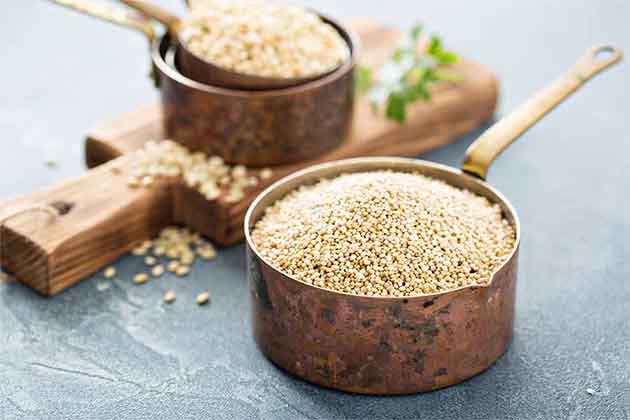
Any list like this would be incomplete without this trendy superfood, as it’s called. Quinoa will both fill you up and help better control your blood sugar due to its combination of protein and fiber.
Quinoa also has much more dietary fiber content compared to other grains. This makes it a great choice instead of white rice. It's also about the same as brown rice, so if you get bored, try a swap to quinoa!
Eggs
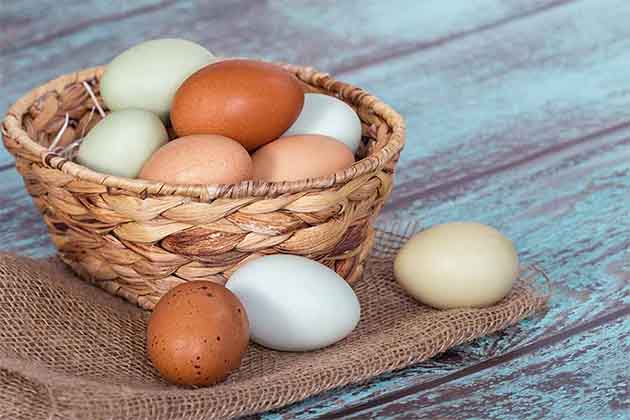
Eggs are great for controlling hunger levels, as they can keep you full for hours. Regular consumption of eggs can also help your heart health in a myriad of ways, like increasing your HDL (or “good” cholesterol) and decreasing inflammation.
They’re great for diabetics due to their ability to improve insulin sensitivity. Be sure to eat the yolk, however. Most of the healthy nutrients come from the yolk rather than the white of the egg.
Dark Chocolate
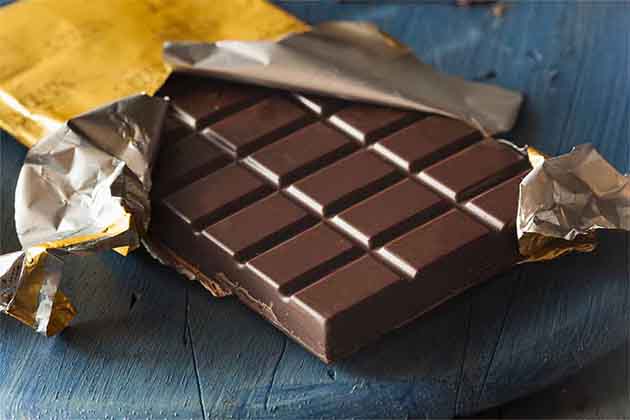
Not many people would expect chocolate to show up on a list like this, but it’s earned its spot. Dark chocolate that’s 70% or more cacao can provide a sweet treat without increasing your blood sugar.
For that reason, be sure to check the label and nutritional value before you snack. Some brands may also have added sugars to look out for. Cacao is also full of antioxidants, which help combat inflammation.
Cauliflower and Broccoli
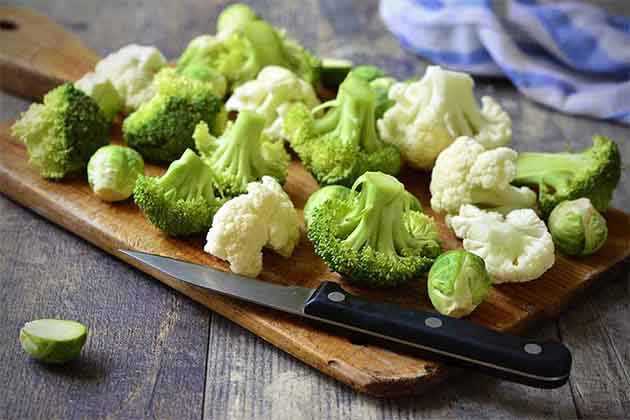
Both cauliflower and broccoli are rich in sulforaphane. Studies have shown that this compound can slow the production of glucose in cells and also improve tolerance to glucose. Both factors make these perfect for diabetes.
Both cauliflower and broccoli are versatile foods that can fit into many meals, as they can be served raw, steamed, or roasted. Ground or grated cauliflower can also serve as a low-carb substitute for refined white rice.
Blueberries

Blueberries are a great way to satisfy a sweet tooth in a healthy way, especially for diabetics. Blueberries are rich in anthocyanins, a type of antioxidant—it’s actually what gives them their blue color.
They also contain flavonoids, which benefit heart health among other things. Additionally, their high fiber content makes them a perfect snack for diabetics.
Flaxseed
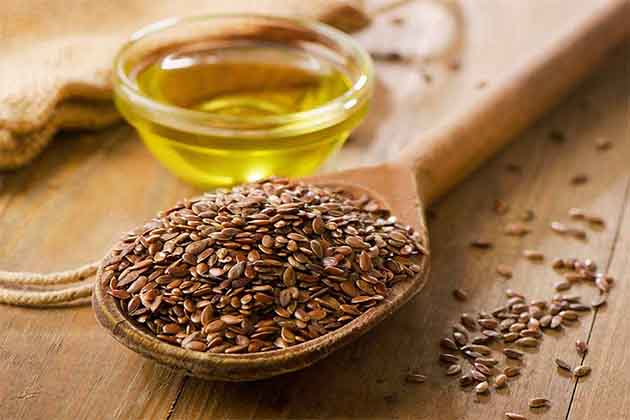
Flaxseed can provide a great deal of health benefits. Some of the insoluble fiber found in flaxseed is made of lignans, a nutrient that can improve blood glucose control and reduce the risk of heart disease.
Flaxseed is also full of viscous fiber that increases feelings of fullness while increasing insulin sensitivity and overall gut health. It’s important to note that flaxseeds can’t be absorbed whole, so they must be ground before their health benefits can be enjoyed.
Apples
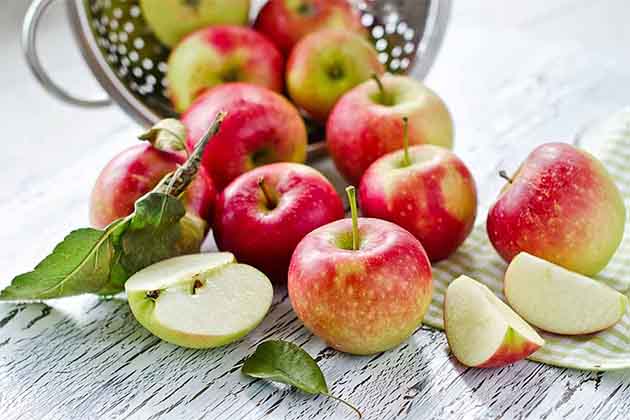
Apples are an excellent source of nutrition, but especially for diabetics. In one study conducted by the Harvard School of Public Health, the diets of 200,000 people were analyzed closely, and the results were surprising.
Those who reported eating five or more apples each week had a 23% lower risk of developing type 2 diabetes when compared to those who didn’t eat any apples. They’re also rich in fiber, which slows down the absorption of carbs and improves blood sugar control.
Avocado
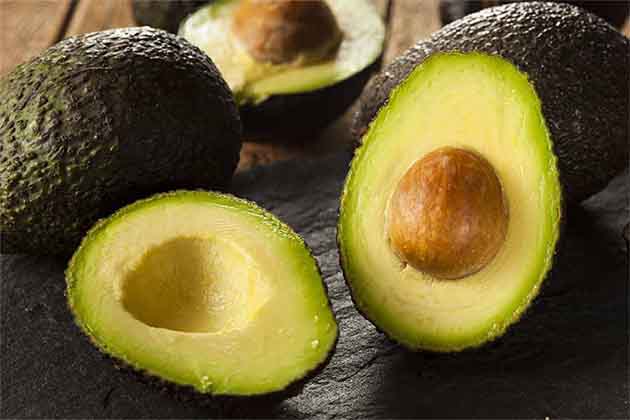
The popularity of these beloved superfoods has exploded in recent years, and for good reason. Avocados are full of monounsaturated fat. This type of fat, when substituted for saturated fats, can decrease a person’s risk of heart disease and even a person’s likelihood of developing type 2 diabetes.
Avocados don't significantly impact blood sugar levels, which makes this fantastic as many high-fiber foods still spike blood sugar levels. Of course, guacamole is a great use of this fruit (yes, it’s technically a fruit), but it's also perfect as a spread for sandwiches or as part of a salad.
Bell Peppers
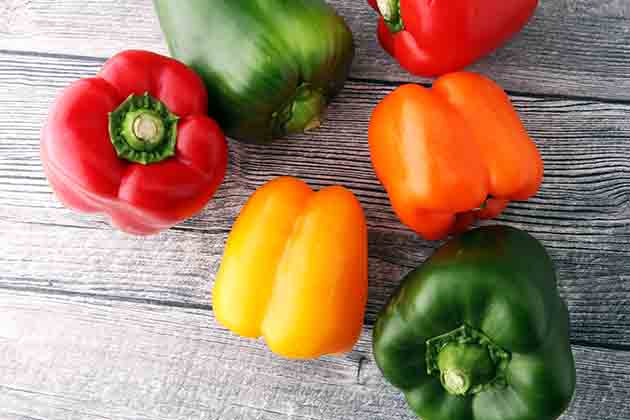
Bell peppers are an excellent addition to any diabetic’s diet for several reasons. They’re low in calories, which helps with maintaining a healthy weight—a very important factor for diabetes.
Bell peppers also contain phytochemicals which can act as powerful antioxidants. On top of this, these peppers contain anthocyanins which can effectively slow the digestion of carbohydrates and lipids, helping control blood glucose levels.
Chickpeas
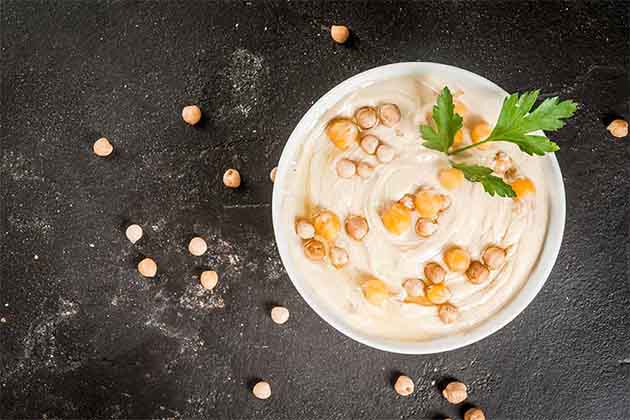
Hummus can be an excellent snack for diabetics and a fantastic substitute for fattier spreads like mayo or cheese. The main ingredient in hummus is chickpeas, also known as garbanzo beans.
Though these are high in carbs, they have enough fiber and protein to both fill you up and keep your blood glucose at a steady level. As a bonus, chickpeas are also high in polyunsaturated fats like omega-3 fatty acids.
Garlic

One clove of raw garlic contains one gram of carbs and only four calories. Across multiple studies, garlic has been shown to reduce LDL (or “bad” cholesterol), blood sugar, and inflammation in those suffering from type 2 diabetes.
It’s also possibly useful in lowering blood pressure. One study in the Natural Medicine Journal showed that those who ate aged garlic over the course of 12 weeks averaged a 10-point drop in blood pressure.
Lentils
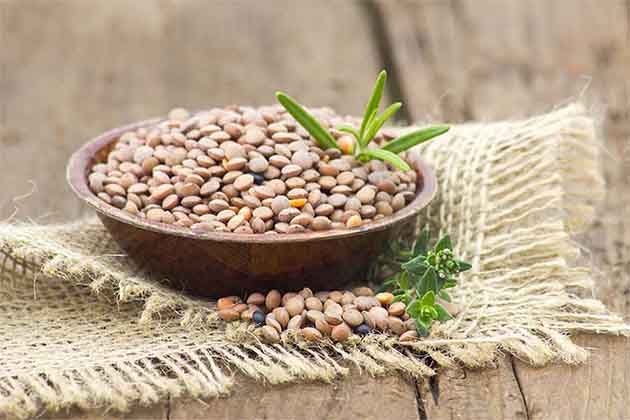
Lentils are high in a type of carb that the body leaves effectively undigested, called resistant starch. This means that lentils have a minimal effect on your blood sugar.
In addition to that, it also means the lentils can feed the healthy bacteria that lie in the bottom of your digestive tract, improving the overall health of your digestive system. For those that aren’t a fan of meats, lentils are the highest level of protein than any other vegetable.
Chia Seeds

Being high in fiber but also low in digestible carbs is what makes chia seeds such a great foot for diabetics. Nearly all the carbs in chia seeds are fiber, which doesn’t increase blood glucose levels.
The fiber of these seeds can even lower blood sugar levels by slowing the movement of food through the digestive tracts, thus slowing its absorption. Chia seeds are also super high in omega-3 fatty acids, so don’t be afraid to throw them in smoothies or breads!
Asparagus
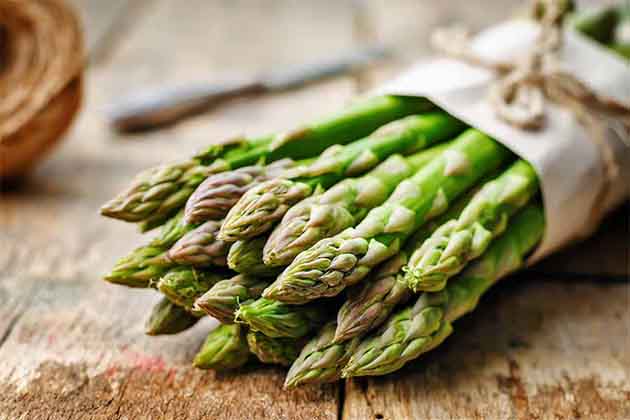
Asparagus is a delicious vegetable that’s low in carbs and calories while high in fiber. Preliminary research has also suggested that asparagus can help increase the production of insulin and help regulate blood sugar levels in those with diabetes.
An article in the British Medical Journal also showed that asparagus triggered an 81% increase in glucose uptake. Talk about a superfood! Asparagus is also high in glutathione, an antioxidant that combats the effects of cancer, diabetes, and heart disease.
Apple Cider Vinegar
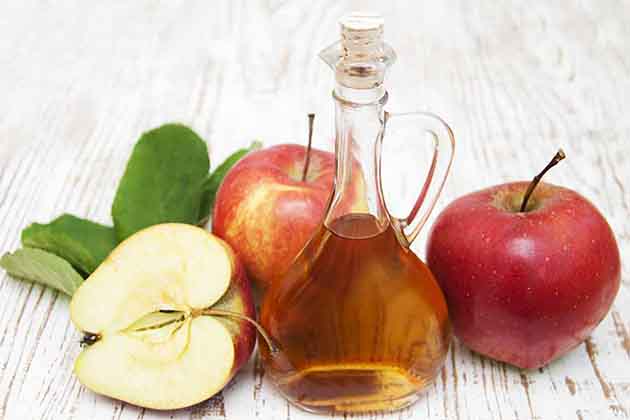
Now this isn’t as tasty a treat as some of the items on this list, but its health benefits make it perfect for diabetes. Studies have shown that apple cider vinegar can lower fasting blood sugar levels and boost insulin sensitivity.
When consumed along with a carbohydrate-rich meal, it can reduce blood glucose response by as much as 20%. A simple way to incorporate apple cider vinegar into your diet is by mixing one tablespoon in a glass of water each day, drinking it, and working your way up to two tablespoons at the most.
Turmeric

This spice is an amazing addition to any diabetic’s diet. The active ingredient in turmeric is curcumin, which is known to reduce the risk of heart disease while lowering blood sugar levels and inflammation.
Additionally, curcumin can benefit kidney health, which is important since diabetes is one of the leading causes of kidney disease. Curcumin isn’t something that’s absorbed easily—however eating turmeric with black pepper will increase the overall absorption by twentyfold.
Kale

Another trendy superfood that’s actually worth all the hubbub: kale. Like spinach, kale is associated with a reduced risk of type 2 diabetes. A study in BMJ showed that those who regularly eat leafy green vegetables can be up to 14% less likely to develop type 2 diabetes than their peers.
For those that suffer from inflammation, kale can also help reduce inflammation when eaten regularly. A half-cup serving of kale has only 18 calories and four grams of carbs while delivering nearly every important nutrient the body needs.
Wild Salmon

Salmon won’t raise your blood sugar levels, but it will provide a healthy source of protein and omega 3 fatty acids that can lessen the risk of stroke or heart disease—two things of which diabetics already have an increased risk.
This low-carb meat is also extremely versatile and can be served grilled, baked, or poached, leaving anyone craving salmon with a lot of options. Other fatty fish that are healthy for diabetics are sardines, mackerel, anchovies, and herring.
Oatmeal

Oatmeal has been heralded as a healthy option for a long time. It was actually the first food to have a specific health claim that was approved by the Food and Drug Administration (FDA). Oatmeal is a great alternative to other starchy breakfast options, like sweeter cereals, due to its high-fiber content.
This richness in fiber allows you to feel full for longer after eating a bowl of oatmeal. Oatmeal also has the highest percentage of soluble fiber than any other grain, which is important in lowering “bad” LDL cholesterol.
Strawberries

Strawberries provide more nutrients than almost any other fruit. They’re high in anthocyanins, the antioxidants that give them their color. That means that these tasty fruits can reduce insulin and cholesterol levels after a meal.
A one-cup serving of strawberries is all you need for your recommended daily intake of vitamin C, providing even more anti-inflammatory benefits. Since strawberries are also lower on the glycemic index compared to other fruits, it can make a great snack.
Carrots
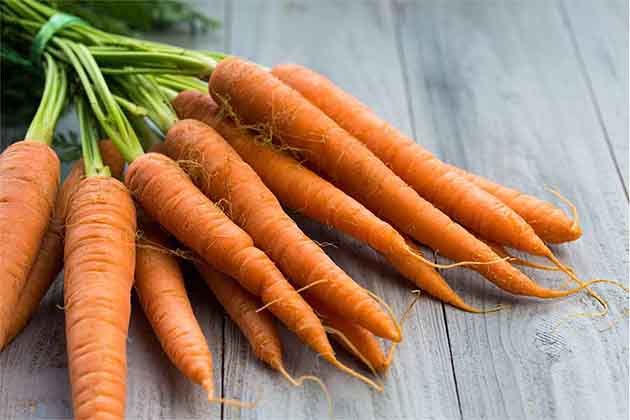
Carrots are classified as non-starchy vegetables because they aren’t rich in carbohydrates. The American Diabetes Association calls a serving of five baby carrots “free food” that doesn’t need to be counted for in a meal plan.
Carrots contain beta-carotene as well, which has been shown in at least one study to help lower the risk of developing type 2 diabetes in a sample size of those with a genetic predisposition to developing it. The sweet flavor could help scratch that itch without raising glucose levels.
Tomatoes
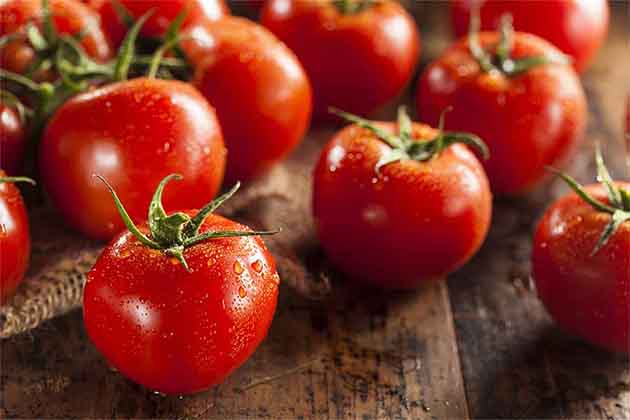
Tomatoes are a great source of vitamin C and vitamin A. They provide powerful antioxidants and can decrease the risk of heart disease according to a 2013 report. Both raw and cooked tomatoes can provide health benefits, though cooked tomatoes are shown to provide more.
A study in 2011 by the International Journal of Food Sciences and Nutrition found that eating two medium tomatoes a day can reduce blood pressure and reduce the cardiovascular risk that's associated with type 2 diabetes.
Cinnamon

Not many people would suspect cinnamon of having a slew of medical benefits, but it actually does. The American Journal of Clinical Nutrition found that a teaspoon of cinnamon added to a largely starchy meal, like oats, can help combat insulin spikes and stabilize blood glucose levels.
The antioxidants in cinnamon, called polyphenols, have been proven to improve your body’s ability to store fat and manage hunger by way of improving insulin sensitivity. Speak to your doctor before starting to increase your cinnamon dosage as cinnamon can interact with other medications.
Red Grapefruit
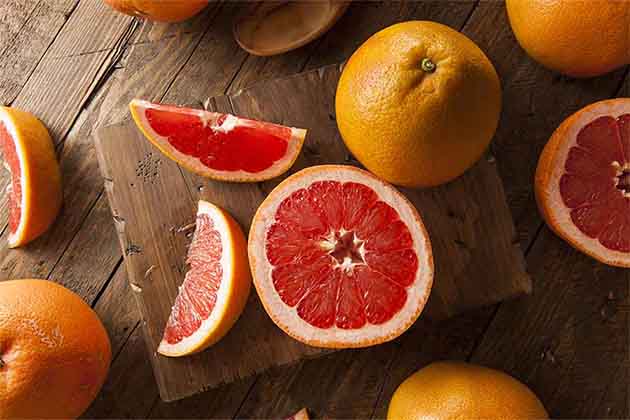
Ruby red grapefruits are much richer in antioxidants then their white counterparts, thus making them the better choice, especially for diabetics. Because of its high levels of vitamin C and soluble fiber, the American Diabetes Association has put ruby red grapefruit on their list of superfoods.
Studies have shown that these fruits can lower “bad” LDL cholesterol levels and increase “good” HDL cholesterol levels. Speak to your doctor before eating grapefruit as it can interact with some medications.
Greek Yogurt
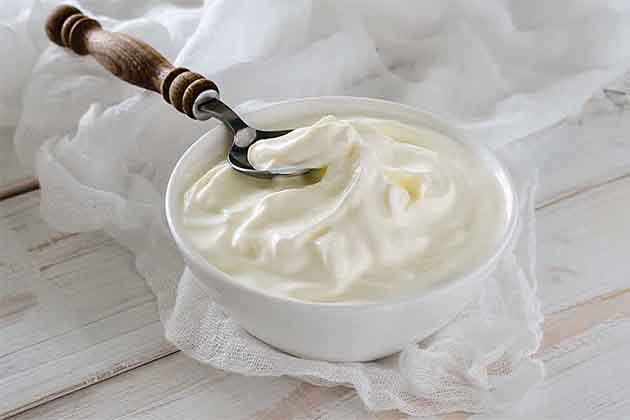
The combination of protein and carbohydrates can leave a person feeling comfortably full, and controlling hunger levels is important for a person with diabetes. That’s why Greek yogurt is a perfect meal choice for a diabetic, because it delivers plenty of both.
Still, it contains fewer carbs than traditional yogurt, which helps to better control blood glucose levels. Be sure to read the label before choosing a Greek yogurt. Some brands add much more sugar, which can spike glucose levels unnecessarily high.
Shirataki Noodles
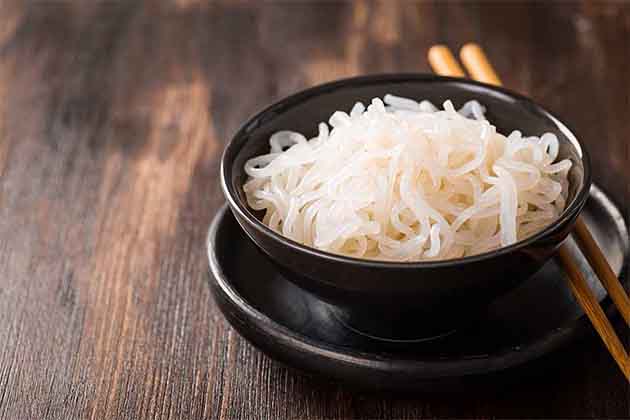
The konjac root is grown in Japan and processed into noodles or rice call shirataki. Shirataki is high in glucomannan, a viscous fiber that can lower blood sugar by slowing the passage of food through the digestive tract and increase feelings of fullness.
These noodles have been shown to lower blood glucose levels and reduce risk factors for heart disease in those with metabolic syndrome and diabetes. They may not look like much, but you can’t beat a food that’s so low in calories and carbs and is packed with fiber.
Extra Virgin Olive Oil
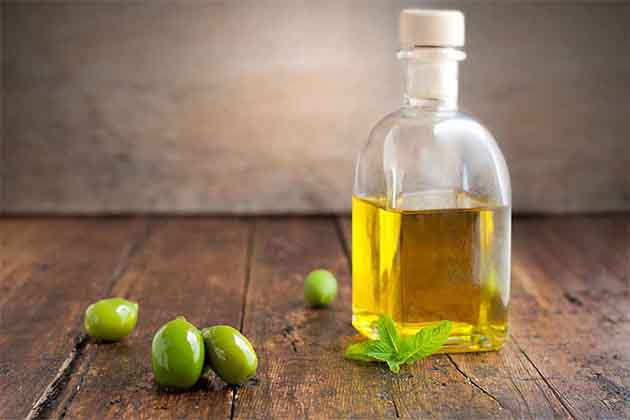
Extra virgin olive oil is a great addition to any diet, but a diabetic’s especially. Over 32 studies on the effects of different types of fat on heart health were analyzed, and olive oil was the only one that was shown to reduce the risk of heart disease.
Olive oil also contains polyphenols, which protect the lining in your blood vessels and reduce inflammation. A study by the Sapienza University in Rome also found that olive oil can lower LDL or "bad" cholesterol.
Squash
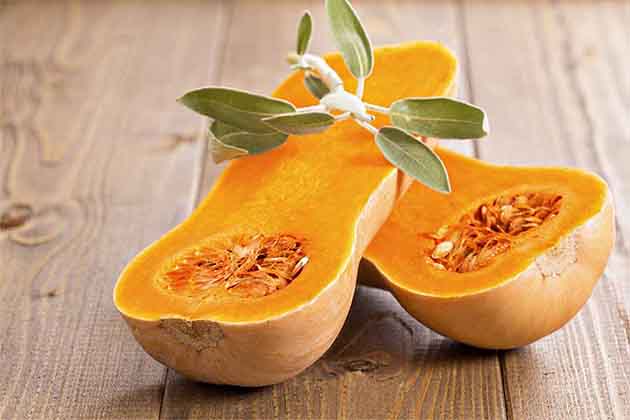
Most vegetables are healthy in one way or another, but squash is one of the healthiest. Studies in animals ingesting squash extract showed reduced levels of both obesity and insulin levels.
The little amount of research done on humans with this extract suggests that it could provide a tremendous reduction in blood sugar levels. Like other vegetables, squash contains high levels of antioxidants.
Cranberries

The antioxidants in cranberries may lower the risk of heart disease by way of reducing “bad” LDL cholesterol, maintaining “good” HDL cholesterol, and lowering a person’s blood pressure. Cranberries are also rich in anthocyanins, which can reduce insulin levels and cholesterol after a meal.
Given the benefits of cranberries, it’s a wonder people usually reserve them for the holidays. They’re great thrown in green beans or eaten in salads. Just be careful as dried cranberries can have added sugars.
Red Onion
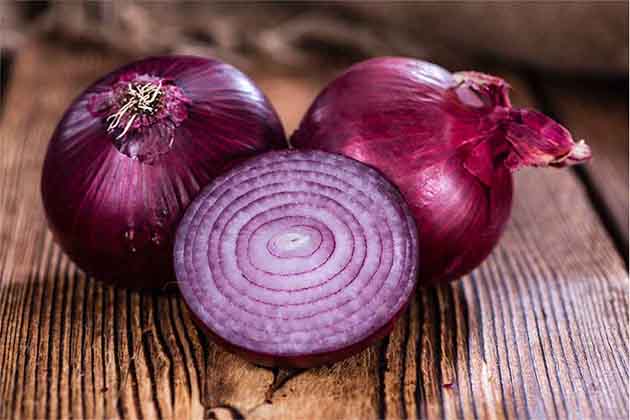
Onions, specifically red ones, are a great addition to any burger, sandwich, or salad because they’re higher in antioxidants than yellow or white onions. They’re great for heart health as well, as they’re a reliable source of fiber, folate, and potassium.
Onions are high in flavonoids, which has made them a point of interest in studying cancer and cardiovascular diseases, as well as chronic illnesses such as asthma. Next time you’re making food or eating a salad, throw in a red onion!
 Author
Alot Health Team
Last Updated: March 03, 2020
Author
Alot Health Team
Last Updated: March 03, 2020